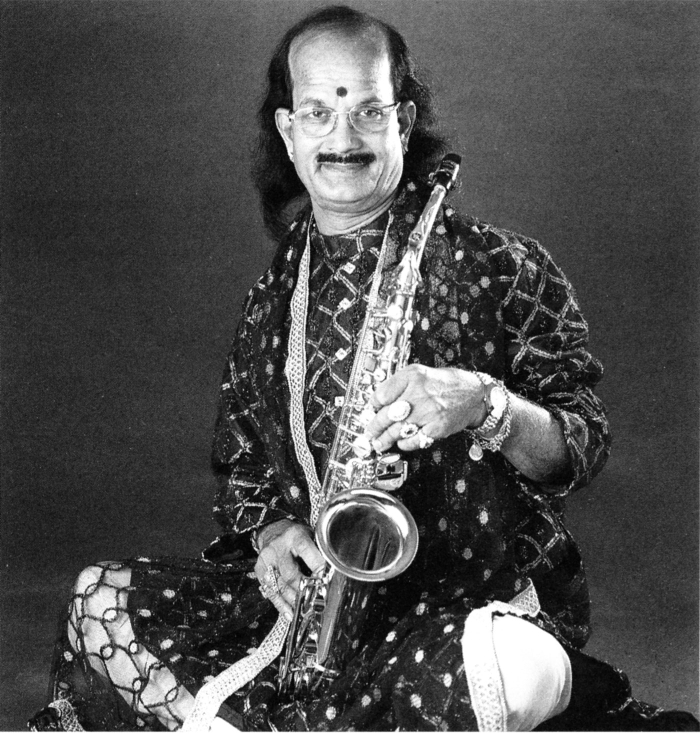
L'EXPOSITION
Kadri Gopalnath : Emperor of the Saxophone

L'EXPOSITION
Kadri Gopalnath :
Emperor of the Saxophone

Photo annonçant le concert du 23
mai 2006 au Théâtre de la Ville, Paris.
Indian Classical music has
had a very long and colourful
history. Indeed, its roots can be traced back to the 4th century BC !
In this long
and interesting historical journey, other forms of music have
influenced its growth,
dynamism and character.
The popular sitar is said to be derived from the Persian seh-tar. The
tabla, which
is an integral part of North Indian (Hindustani) classical music
concerts, was perhaps
influenced by the tabl, an Arabic instrument. More recently, in the
19th century,
the violin was introduced to Indian classical music. However, in all of
these introductions,
the instrument was always adapted not merely adopted. For example, the
adaptation
of the violin to the Indian cultural tapestry is so complete and total
that most
Indians would naturally assume that the instrument is indigenous ! In
recent years,
other instruments like the clarinet, mandolin and guitar have also made
their entries.
The most dramatic of these is, however, the saxophone. Its champion is
the Emperor
of this instrument, Kadri Gopalnath, the first musician to introduce
and popularise
it as a mainstream instrument in Indian classical music.
Today, after 50 years of post-colonial independence, Kadri Gopalnath
represents a
unique facet of Indian classical art: its ability to adopt, imbibe, and
adapt even
though it is one of the oldest classical music systems in the world.
As a fifteen-year-old, Kadri Gopalnath, a budding classical musician,
had the opportunity
to listen to a brass band associated with a Palace. He was immediately
attracted
by the sound of the saxophone and it wasn't long before he started
learning to play
the instrument. It is not easy to get the necessary glides,
oscillations, note ornamentations
and embellishments on an instrument like the saxophone. But, given his
mastery over
the instrument and his intrinsic knowledge of Indian classical music,
Kadri Gopalnath
is, today, the undisputed master of the instrument in Indian classical
music.
Kadri
Gopalnath was born into a musical family.
His father played the nadhaswaram, the Indian equivalent of the
clarinet. By the
age of ten, Kadri was quite proficient at playing this instrument. For
a further
five years he studied vocal music in Mangalore (India). After hearing
the Palace
band play at Mysore, Gopalnath had his heart set on learning the
saxophone. His father
purchased a saxophone and got the young boy tutored by the Palace
band's saxophonist,
Mr Lakshmi Narasimhaiah. Although, his training in the nadhaswaram was
useful, there
were vast differences in the two instruments; Gopalnath had to work
hard for many
years to firstly master the instrument and then, adapt it to play
classical music.
In 1975 Gopalnath came to Madras where he was tutored by the renowned
musician, T.
V. Gopalakrishnan. In 1977, he gave his first concert in Madras. His
fame soon spread
all over Southern India and he was soon a favourite at festivals and
concerts. He
grew in stature as a cult figure of immense popularity all over India
when he had
the opportunity to provide the background scores for a very successful
film called
'Duet', which has a saxophonist as its hero.
Since then Kadri Gopalnath has been a true phenomenon in the world of
Indian classical
music. He has had the opportunity to participate in major festivals
including the
Berlin Jazz Festival, the Jazz Festival in Prague, the Music Halle
Festival in France
and the International Cervatino Festival in Mexico. He has played with
many leading
jazz musicians including the saxophonist, John Handy. He was the first
South Indian
classical musician to be invited to perform in the BBC Promenade
concert in 1994.
He has also toured the USA, Europe, Australia and South East Asia
extensively. He
has been awarded many important titles including 'Saxophone
Chakravarthy' - The Emperor
of Saxophone.
| Actualité | Musiciens | Label Musivi | Presse | Contacts | Partitions | Expo | Pédagogie |